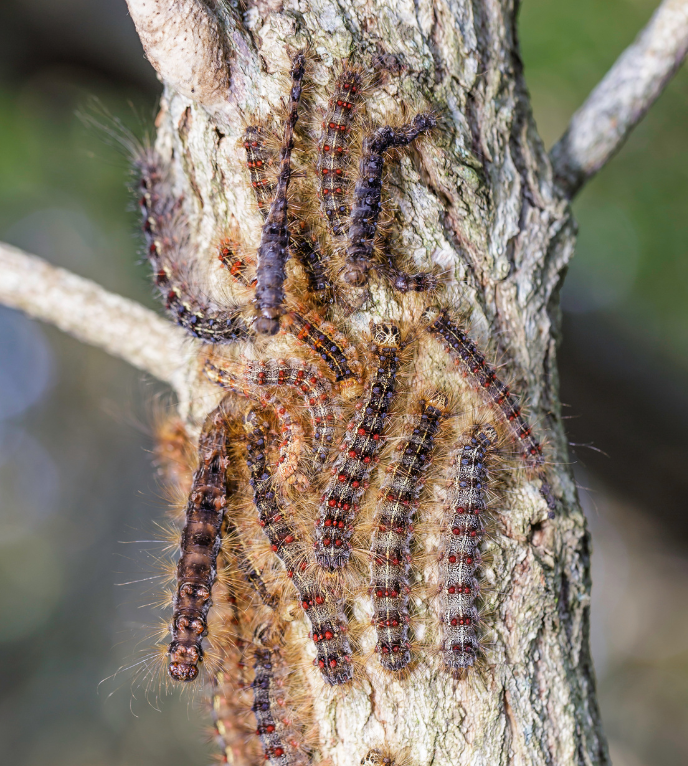Invasive species are a problem in natural areas just about anywhere on Earth. Some, like spongy moths (Lymantria dispar), can damage plants on your property and be a major nuisance. If you live in the Northeastern U.S., you might have problems with this plant. But how do you detect spongy moths?
In this Outdoor Tips post, I’ll guide you through the signs to look for to know if you have spongy moths in your yard.
Different signs at different times
Like all other insects, this moth goes through different stages of its life cycle throughout the year. As part of the order lepidoptera (along with butterflies), it has four life stages:
- Egg
- Larva (or caterpillar)
- Pupa
- Adult (moth)
Depending on the time of year and the life stage the moths are on, you will have a different likelihood of finding them. As with looking for any other kind of wildlife, knowing the signs that they leave behind is important.
Eggs
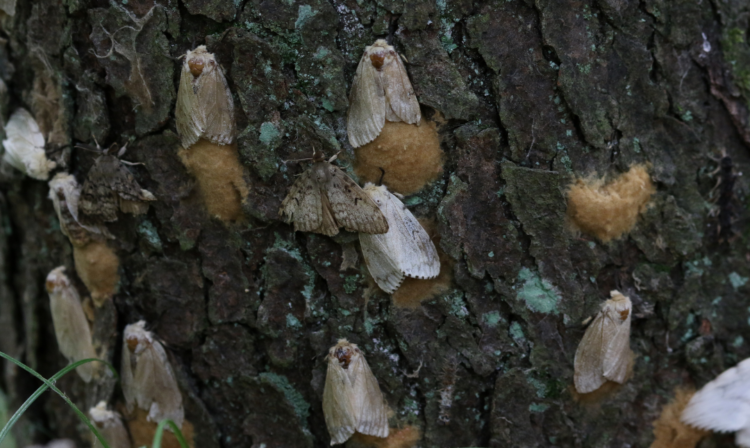
Eggs are far and away the easiest way to know if you have spongy moths. Because this species lays its eggs in the Fall, these easily identifiable egg masses are around until Spring. This is also how spongy moths survive the winter: as eggs laid in a cozy place!
Female moths lay fuzzy-looking, tan-colored sacs of eggs on vertical surfaces after breeding. You will start noticing these strange sacs starting in late Summer, but you can look for them throughout the Winter. In my experience, they can vary dramatically in size, but are typically around 1-2 inches (2-5cm) long and about an inch (2cm) wide. To me, they look like puffy lumps of sawdust that someone glued to a tree or the side of a shed or house.
Finding spongy moth eggs
Fall and Winter are great times to search for spongy moth egg sacs in your yard. One major advantage is that when trees lose their leaves, it can reveal hidden eggs. Here are some places to check for eggs:
- the underside of large tree branches
- tree trunks
- cavities, depressions, or loose bark around trees
- patio furniture
- garbage bins
- fences
- benches
- siding on garages, sheds, or houses
Spongy moth caterpillars

Fortunately, the larvae of this species are pretty easy to tell from other caterpillars. This is thanks to the unique spotted pattern running down their backs. They have five pairs of blue spots, then six pairs of red spots. Generally speaking, I can’t think of another caterpillar in North America that has that pattern, and also so many fuzzy hairs.
Even though they might be easy to identify, these caterpillars are often really small when they are first hatched. Young caterpillars will quickly climb high in their tree, which can make them hard to see.
Defoliation
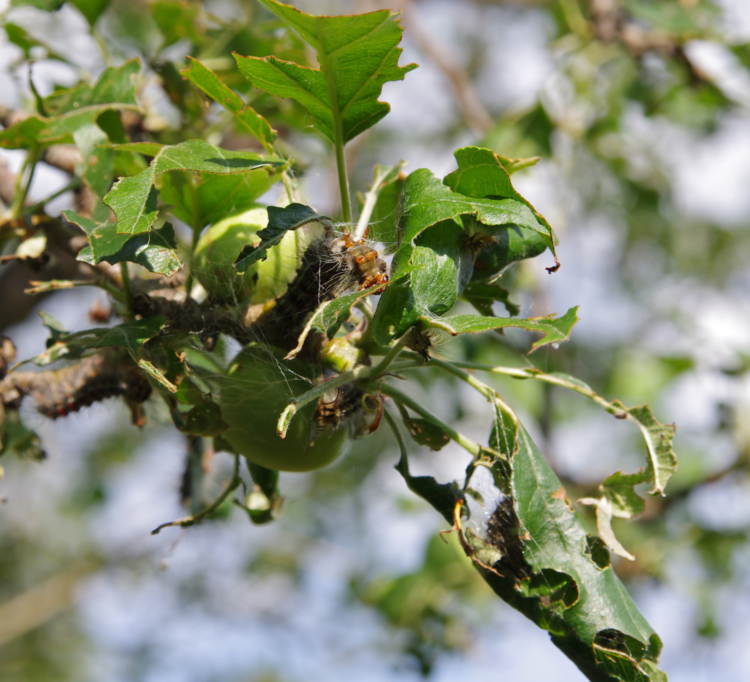
As they grow, they molt their skins to grow bigger, progressing through several stages or instars. Of course, during this time, they are bulking up like bodybuilders by gobbling down green leaves from trees in your yard!
Because of this, you may begin to notice defoliation, or damage to tree leaves in your yard. The loss of these leaves during Spring or Summer is a good sign that caterpillars are thriving up there! Furthermore, if the damage is occurring in an oak tree (Quercus sp.), you may be especially likely to have spongy moths. Oaks are their favorite! If there aren’t any oaks around, they’ll also eat:
- beeches
- birches
- elms
- maples
The pupal stage
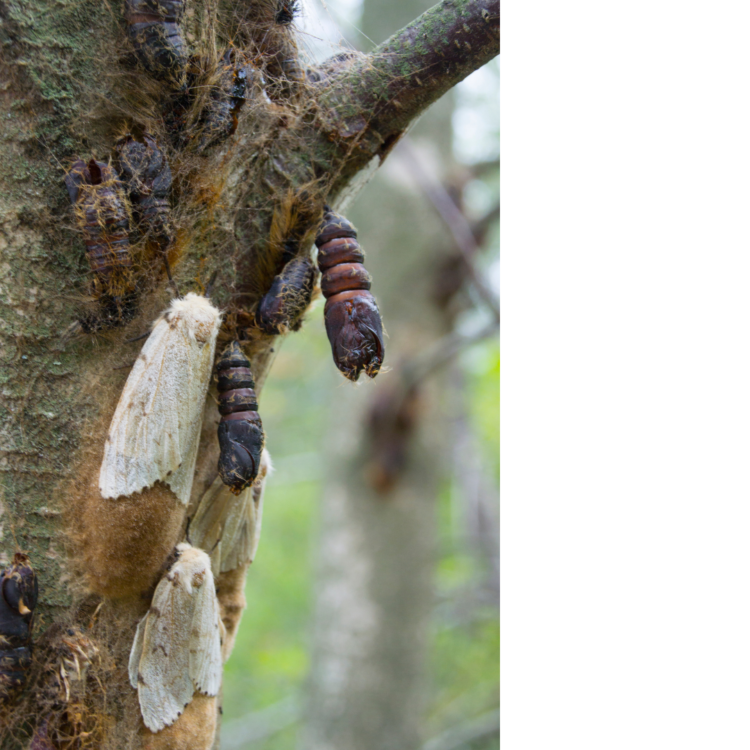
After eating their fill of leaves, the caterpillars make a pupa, in which they will lay dormant throughout the Winter. Although spongy moth pupae are pretty obvious, it is not always easy to tell them from those belonging to other species. Of course, we want to protect our native insects, so destroying or removing any old pupa is not a great idea!
One way to identify spongy moth pupae is if they’re attached to the same part of a tree where eggs are located. Also, if you see lots of them together, especially on an oak tree.
These reddish-brown, vaguely poop-shaped pupae will often have tiny, curly, yellow hairs protruding from them. Just like egg masses, keep an eye out for them in winter!
Adult moths
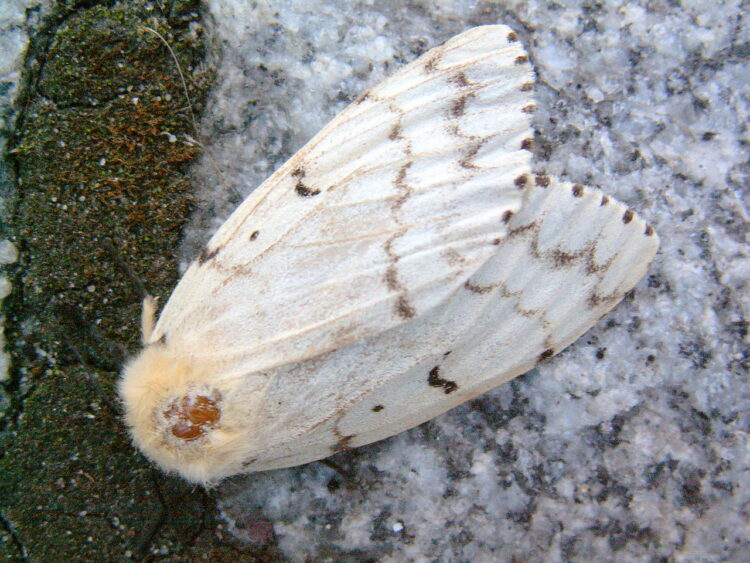
Adult spongy moths only live for a couple of weeks, so the window to spot them is not very long. When it comes to nature’s timing, it’s easy to miss the things that happen quickly. Also, it can be very hard to tell adult moths apart if you aren’t experienced.
One of the biggest tell-tale signs will be large aggregations of light-colored females gathering to lay eggs. If you see them near egg masses, that is a dead giveaway. They may also show up obviously against the bark of darker colored trees.
Further reading:
- Spongy moth profile, USDA National Invasive Species Center
- Spongy moth history and science, New York State Department of Environmental Conservation
Thanks for reading about how to detect spongy moths in your yard!
I hope you found this Outdoor Tips post helpful. Have you run into this species in your neck of the woods? Let us know in the comments! If you’d like to submit your own request for a tips or advice post, don’t hesitate to reach out using the Contact page.

